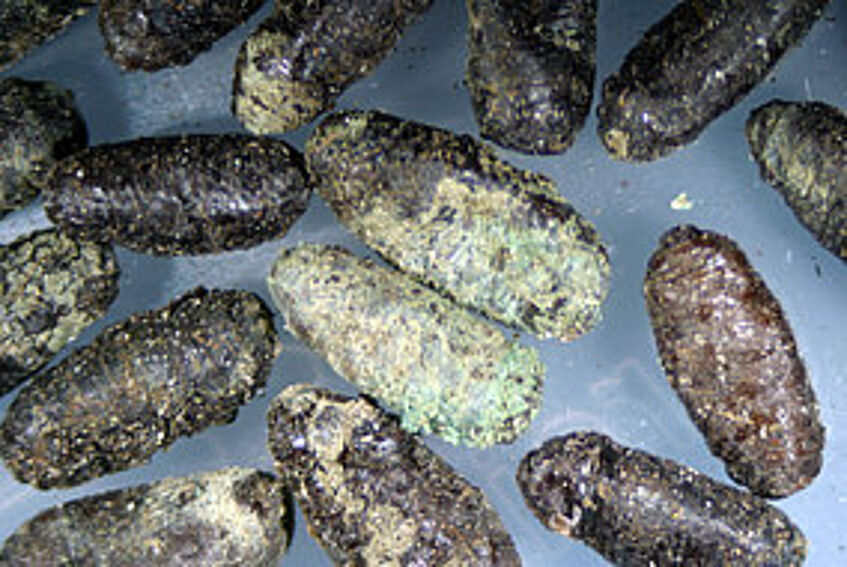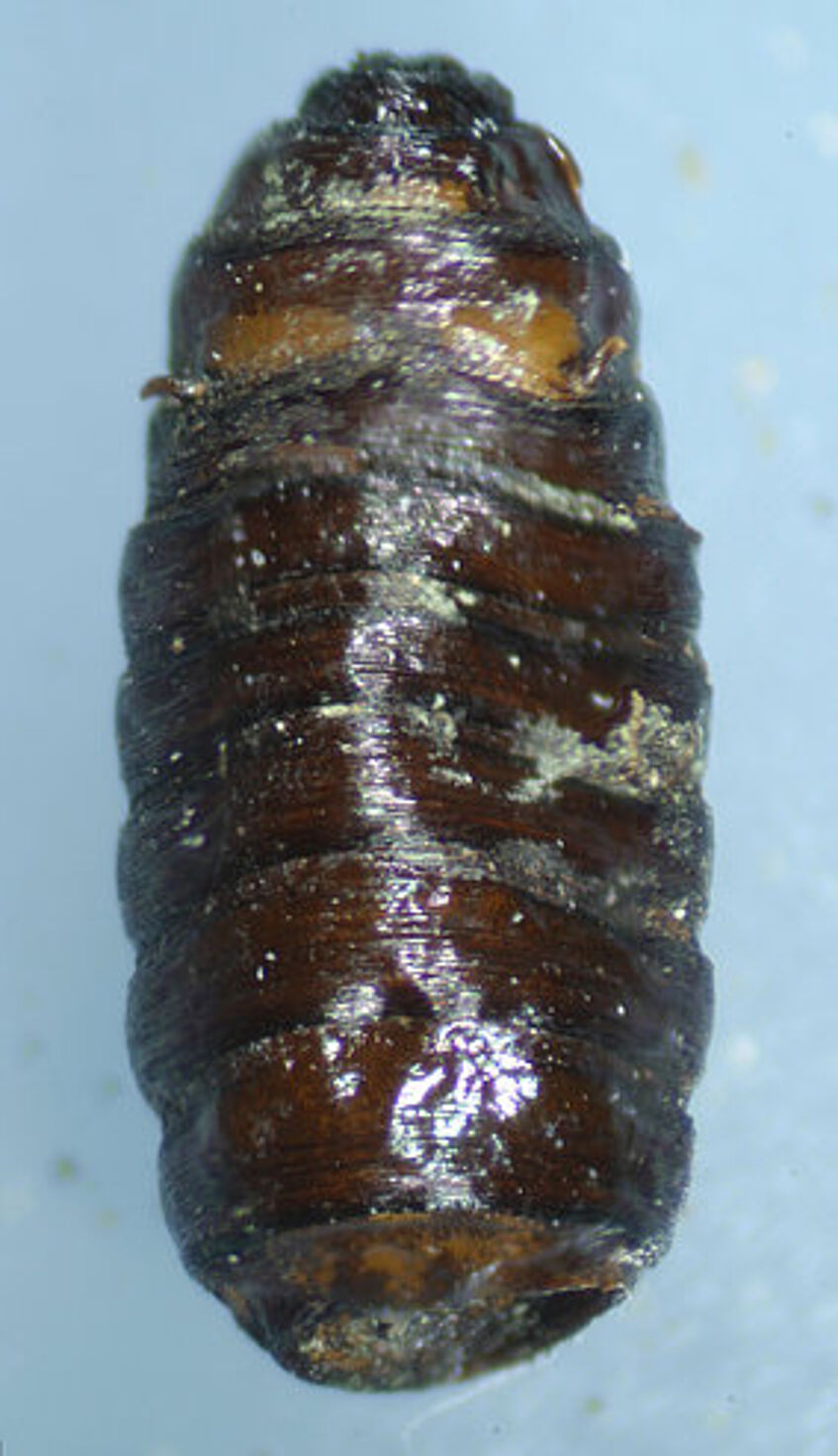Archaeoentomology
Soon after death the colonisation of a corpse by different representatives of the cadaver entomo-fauna begins, provided they have access to the corpse. Different insect species show special preferences for the different decomposition stages (resulting in so-called population waves).
Besides other archaeological findings especially the archaeological specimen in grave 34 of Frohsdorf impressively show that insect remains can be perfectly
preserved under favourable conditions and assuming careful excavation methods subsequently identified.
In some cases archaeoentomological specimen together with other features may yield information about possible food goods (meat), perimortem injuries, body preservation, secondary grave openings, the season of death, the postmortem interval as well as weather and climatic conditions around interment.

puparia of Ophyra capensis

